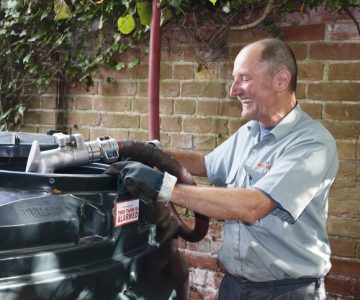What to Do After a Fire: 8 Water Damage Repairs
When a fire breaks out on your property, there is no doubt that it has the potential to cause extensive damage. Not only can the flames consume all materials in their path, but there are also aftereffects caused by corrosive byproducts that persist even after the fire has been extinguished.
The water used to quench the fire can cause extensive damage to your home. If not dealt with quickly and correctly, water damage can lead to mold growth, structural damage, and other serious issues.
8 Repairs for Water Damage
You will require most of these repairs for almost any home or business that had a fire put out with hoses by the fire department. Even a tiny fire necessitates a large amount of water and pressure from the hoses to put out. Contacting a professional property damage restoration service may be the best option if the damage is extensive.
Cleaning Up
Cleaning is essential. After removing most ruined items, you must immediately clean and disinfect them. This step will need to be repeated throughout, and depending on the extent of the damage, you may find yourself cleaning the same areas multiple times. The best thing to avoid serious health risks is to use bleach solutions and other disinfectants.
Mold Buildup
Mold is a significant issue that can be difficult to control after a fire. There are many different types of mold, none of which you want in your home or business, but black mold is hazardous. The cleaning step is critical to preventing mold growth. Still, you should also thoroughly inspect all areas of your home or business and return to those areas even after the restoration is complete to ensure mold is not growing.
Wood Damage
Any porous material, such as wooden floors and furniture, will absorb water quickly and sustain damage. Wood that has become severely soaked and damaged should be removed. Examine the floors, cabinets, and doors for signs of water damage. You may be tempted to save some of it, and while you may be able to in some cases, it is best to discard it.
Ceiling Defects
Ceilings should be checked first when repairing the damage. Damaged ceilings risk collapsing and causing additional damage to your already damaged home or business. Ceiling panels can be replaced as needed, but other ceilings may require a total replacement. Inspecting and repairing damaged roofs after a fire is complex, and you may need the assistance of a professional to proceed.
Drywall Defects
Depending on the size of the fire and the amount of water used to extinguish it, the drywall may have taken the brunt of the damage. Dealing with drywall damage is unpleasant, but it is preferable to the alternative of rotting wood. Some drywall can be salvaged by drying it out, but there will be areas that must be cut out and replaced. To save time and money, you can patch your drywall only in the affected areas.
Seal and Caulk
If water has been in your home or business for an extended period, the seals around appliances and objects like bathtubs and toilets will be compromised. You could face catastrophic damage if these seals crack or become loose. Examine all seals and replace any that are damaged with caulk. You should do it after the cleanup is finished.
Electrical Damage
The electrical components in your home and the wiring behind your walls may have become so damaged that they are now a fire hazard. Your electrical items, such as computers and televisions, were most likely damaged by the fire, smoke, and water. These should be replaced in many cases and may be covered by your insurance. If you are not qualified, contact a fire damage restoration in Palm Coast immediately if you suspect your electrical systems have been damaged.
Carpet Damage
After severe water damage, carpets can harbor mold and other toxic substances. You can salvage some carpets and rugs, but others must be torn up and replaced. It is difficult to inspect carpets and determine whether or not they are salvageable, so you will want to invest time and patience in adequately drying and cleaning them. For more information, you can click here to speak with a professional.
Conclusion
You do not want any moisture to remain after water damage. Drying out your home or business should be a priority and something you constantly address before, during, and after restoration. Use fans to circulate air in each room and dehumidifiers in areas that have suffered the most water damage. Industrial dehumidifiers may be required in extreme cases where you should consult with a professional.




